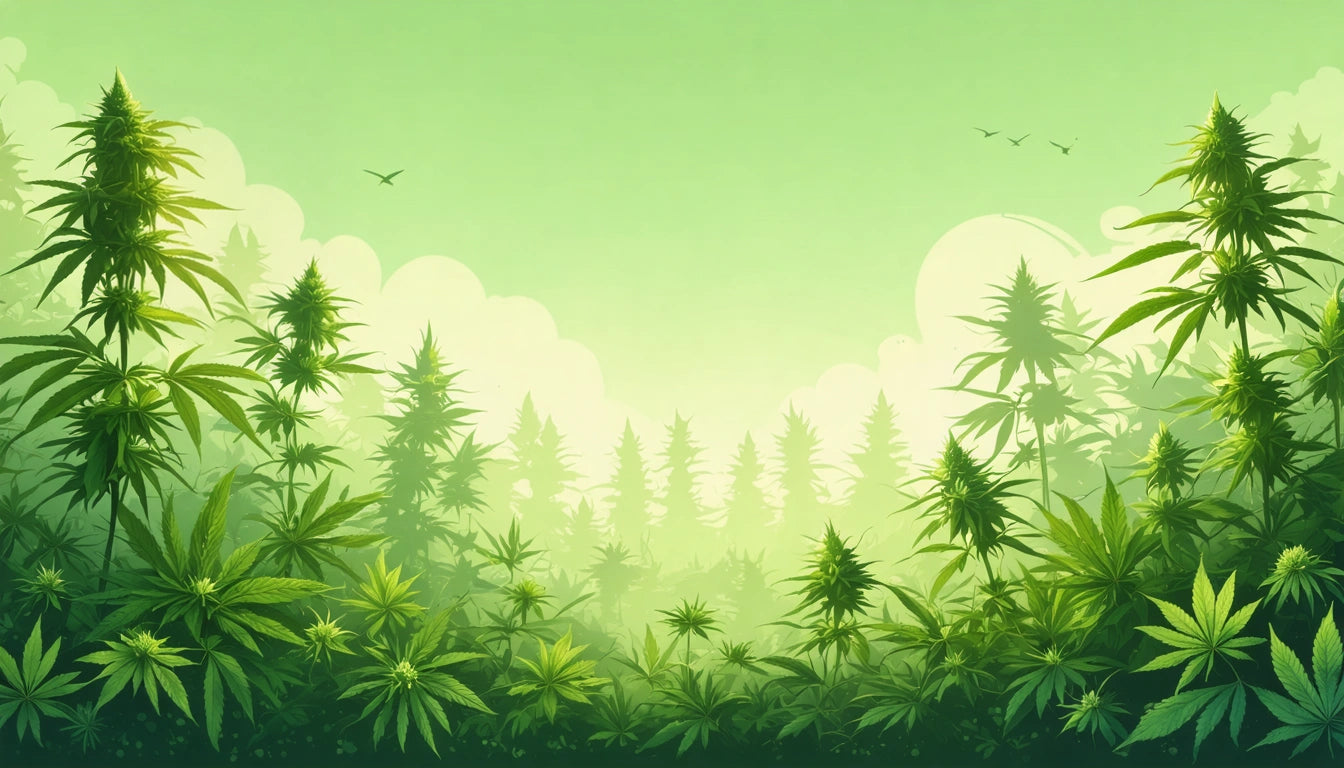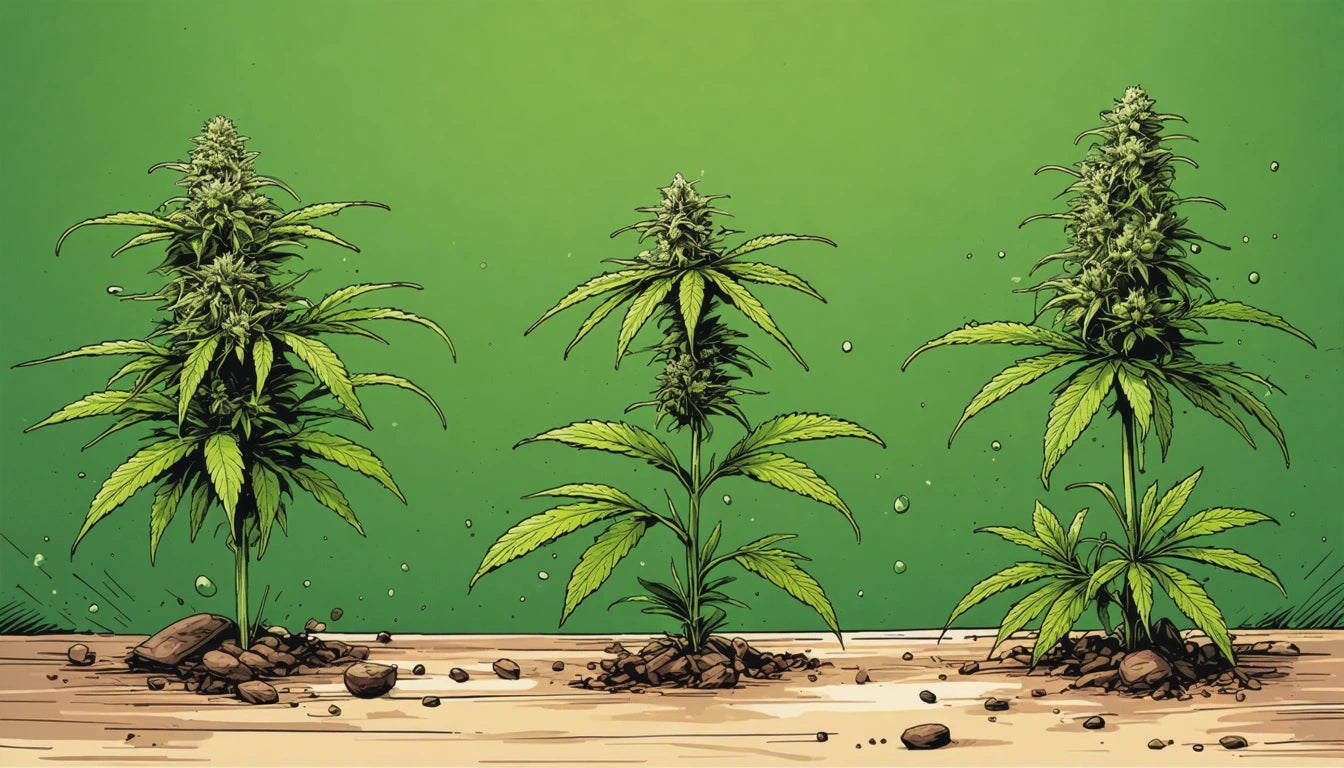Table of Contents
- Natural Habitats: Where Does Weed Grow Naturally
- Historical Cultivation and Traditional Growing Methods
- Modern Cultivation Techniques
- Indoor vs. Outdoor Growing: Pros and Cons
- Best Growing Regions for Cannabis
- Legal Considerations for Cannabis Cultivation
- The Future of Cannabis Cultivation: Sustainability and Innovation
Where Does Weed Naturally Grow and How Is It Cultivated?
Cannabis has been growing naturally and under human cultivation for thousands of years. Understanding where weed naturally grows and how it's cultivated provides insight into this versatile plant's requirements and potential. From wild landraces to sophisticated indoor operations, cannabis cultivation continues to evolve while maintaining connections to its natural origins.
Natural Habitats: Where Does Weed Grow Naturally
Cannabis is indigenous to Central Asia and the Indian subcontinent, with evidence suggesting it originated in regions spanning from modern-day Mongolia and southern Siberia to the Hindu Kush mountains. These areas provided the ideal combination of climate, altitude, and soil conditions for cannabis to thrive without human intervention.
Today, wild cannabis (often called landrace strains) can be found growing naturally across various global regions:
- Central and South Asia (Afghanistan, Pakistan, India, Nepal)
- Parts of the Middle East (Lebanon, Turkey)
- Portions of Africa (Morocco, South Africa)
- Select areas in the Americas (Jamaica, Mexico, Colombia)
In these regions, cannabis has adapted to local conditions over centuries, developing unique characteristics based on the specific environmental factors. The origin and natural cultivation of marijuana has significantly influenced modern growing practices.
Historical Cultivation and Traditional Growing Methods
Cannabis cultivation dates back thousands of years, with evidence suggesting humans began growing the plant around 12,000 years ago. Traditional cultivation methods varied by region but generally followed natural growing cycles and local agricultural practices.
In regions like the Hindu Kush mountains, farmers selected seeds from plants displaying desirable traits and planted them in fertile valley soils. These traditional methods relied on:
- Natural sunlight cycles
- Seasonal rainfall patterns
- Organic fertilization (animal manure)
- Hand harvesting and processing
Many of these traditional techniques continue in regions where cannabis has been cultivated for generations. The history and original uses of marijuana have shaped how various cultures approach cultivation.
Modern Cultivation Techniques
Today's cannabis cultivation incorporates advanced agricultural science while building upon traditional knowledge. Modern growers have developed sophisticated techniques to maximize yield, potency, and efficiency.
Soil Growing
Soil remains the most accessible growing medium, whether in outdoor fields or indoor containers. Quality soil provides:
- Essential nutrients
- Beneficial microorganisms
- Water retention capabilities
- Root support and development
Many commercial growers use specialized soil mixes or amend existing soil to create optimal growing conditions. For those growing at scale, proper storage solutions for harvested product become essential to maintain freshness and potency after cultivation.
Hydroponic Systems
Hydroponics eliminates soil, instead growing plants in nutrient-rich water solutions. These systems offer:
- Precise nutrient control
- Faster growth rates
- Water conservation
- Reduced pest issues
Common hydroponic methods include deep water culture, nutrient film technique, and ebb and flow systems. Each provides different advantages depending on the grower's goals and resources.
Indoor vs. Outdoor Growing: Pros and Cons
Understanding how weed grows in different environments helps cultivators make informed decisions about their operations.
Outdoor Cultivation
Outdoor growing harnesses natural elements and typically produces:
- Larger plants with higher yields
- Lower production costs
- Reduced carbon footprint
- Seasonal harvests (typically once per year)
However, outdoor growers face challenges including weather unpredictability, pest management, and security concerns. For those interested in outdoor cultivation, essential tips for growing outdoors can help maximize success.
Indoor Cultivation
Indoor growing provides environmental control and offers:
- Year-round production capability
- Protection from weather and pests
- Precise control over growing conditions
- Potentially higher potency products
The tradeoffs include higher startup and operational costs, increased energy usage, and typically smaller plants. For beginners, comprehensive growing guides can help navigate these challenges.
Best Growing Regions for Cannabis
While cannabis can adapt to various environments, certain regions offer ideal growing conditions. The best places to grow weed include:
Northern California (Emerald Triangle)
This region's Mediterranean climate provides:
- Hot, dry summers
- Mild, wet winters
- Optimal light cycles
- Rich soil conditions
Pacific Northwest
Oregon and Washington offer:
- Abundant water resources
- Moderate temperatures
- Varied microclimates
Southern Europe
Spain, Portugal, and parts of Italy provide:
- Long growing seasons
- Ideal humidity levels
- Established agricultural infrastructure
Legal Considerations for Cannabis Cultivation
Understanding where it's legal to grow weed is essential before starting cultivation. Regulations vary significantly by country and, in the United States, by state. In the US, home cultivation laws differ widely, with some states allowing multiple plants while others prohibit any personal growing.
For those in legal markets, understanding practical considerations alongside legal requirements is crucial for compliance and success.
The Future of Cannabis Cultivation: Sustainability and Innovation
As the cannabis industry matures, cultivation practices continue to evolve with emphasis on sustainability and technological advancement. Future trends include:
- Energy-efficient LED lighting systems
- Automated growing environments
- Water reclamation and conservation systems
- Organic and regenerative farming practices
- Genetic preservation of landrace strains
These innovations aim to reduce environmental impact while increasing quality and consistency. For home growers, beginner-friendly grow kits increasingly incorporate sustainable technologies and practices.
Understanding where weed naturally grows provides valuable insights for cultivation, whether for personal or commercial purposes. By combining traditional knowledge with modern techniques, today's cannabis cultivators continue to refine and improve this ancient agricultural practice.











Leave a comment
All comments are moderated before being published.
This site is protected by hCaptcha and the hCaptcha Privacy Policy and Terms of Service apply.